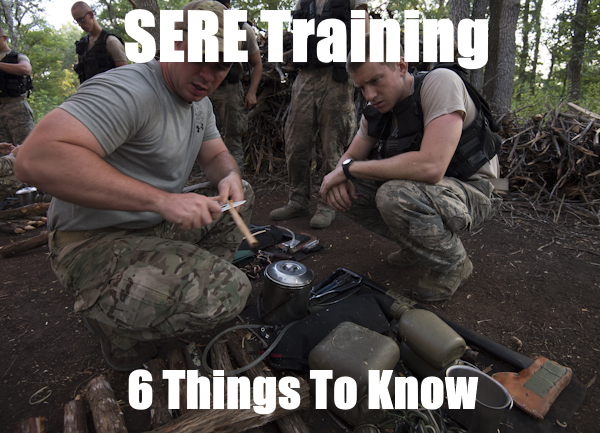SERE training provides the knowledge, resources, and tools to survive under the most extreme, grueling circumstances.
The program introduces troops to survival skills and evasion techniques necessary to avoid being captured.
Survival, Evasion, Resistance, and Escape (SERE) training also provides valuable lessons and techniques for resisting or escaping capture.
For this reason, many service members (including Special Forces) undergo SERE training.
Learn more about SERE training including the types of courses and programs offered in the U.S. Armed Forces.
Related Article – Air Force SERE Specialist (1T0X1): Career Profile
Table of Contents
SERE Training: 6 Things You Need to Know
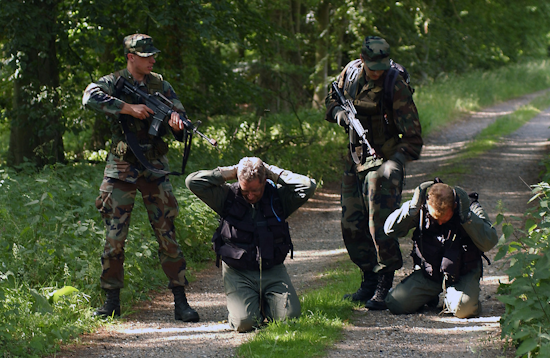
The reality is that all troops face the possibility of being captured, interrogated, and tortured.
Military personnel who become prisoners of war (POWs) face extreme isolation, starvation, and intimidation tactics.
For this reason, the U.S. Armed Forces developed SERE training to prepare troops for being detained behind enemy lines.
As a result, the Survival, Evasion, Resistance, and Escape (SERE) course introduces military personnel to the skills and tools needed to survive.
Although the Geneva Conventions have defined how prisoners of war should be treated, there are many war crimes.
Unfortunately, many insurgent and terrorist groups have little regard for international law and therefore abuse captors.
Consequently, various military branches have created their own version of SERE training.
In general, all service members of the U.S. Armed Forces go through some type of prisoner-of-war training.
However, not every service member receives the same degree or quality of training.
In fact, the most exclusive training is reserved for Special Forces and other elite military units that work on the front lines.
Thus, commandos undergo rigorous SERE training, including learning how to survive in the wilderness and evade capture.
Moreover, military personnel learn and practice techniques to resist interrogation and even withstand torture.
Accordingly, it’s helpful to understand several important things about SERE training, including:
- Purpose of SERE Training
- History of SERE Training
- SERE Training Schedule / Curriculum
- SERE “Code of Conduct” Training Levels
- SERE Training Survival Locations
- U.S. Military SERE Survival Schools
The Survival, Evasion, Resistance, and Escape (SERE) course is divided into 3 categories (A, B, and C).
The different levels of SERE training are based on different demands and tailored to specific roles in the military.
Currently, all 5 branches of the Armed Forces feature their own version of SERE training, along with many other alternatives.
Discover the 6 important things to know about SERE training, including curriculum and training locations.
Related Article – Army AIT: A List Of All 11 Locations + Training Summary
#1. Purpose of SERE School
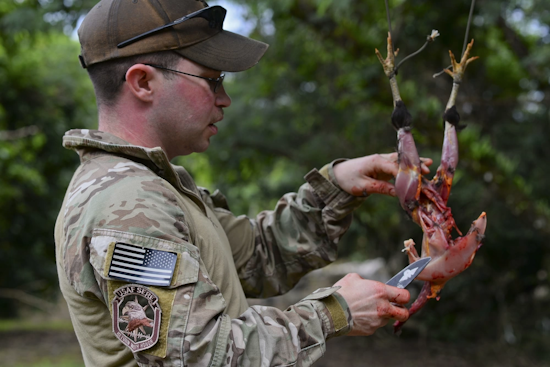
Survival, Evasion, Resistance, and Escape (SERE) is a type of training program in the U.S. Armed Forces.
Often, many refer to the training program by its acronym, SERE.
SERE training prepares military personnel, Department of Defense civilians, and private military contractors for a variety of survival techniques.
The purpose of the program is to survive and “return with honor.”
Consequently, the curriculum (more details, below) introduces trainees to several different survival scenarios.
These include mastering basic survival skills, evading capture, and employing techniques for escaping captivity.
Furthermore, members of the training program are advised to follow the SERE military code of conduct.
SERE training was first established by the United States Air Force at the conclusion of World War II (more information, below).
Later, the U.S. Navy and Marine Corps created their own SERE programs during the beginning of the Cold War.
However, SERE training has since been revised in the wake of guerilla warfare in Vietnam, and the tactics of insurgency groups.
Today, SERE training is introduced to a variety of personnel based on the risk of capture or exploitation.
Generally, aircrew, special operations, and foreign diplomatic and intelligence personnel receive the most intense forms of training.
Survival, evasion, resistance, and evasion training is split into 3 different groups or classes – A, B, and C.
The “A” level course is the least intense whereas the “C” level course is designed for individuals who are at a high risk of capture or interrogation.
Meanwhile, Tier 1 special-mission units (such as Delta Force and Navy SEALs), combat controllers, pararescue, tactical air control, and aircrew members have additional SERE training.
The same is often true for intelligence officers and other foreign ambassadors.
#2. History of SERE School
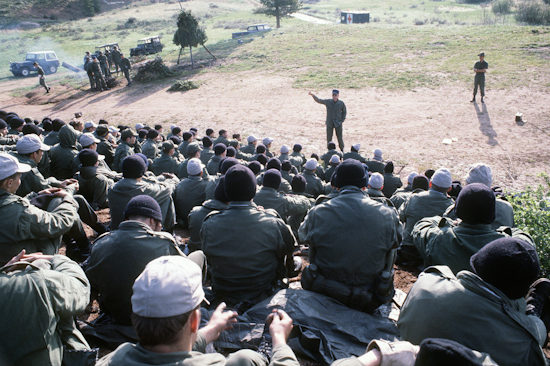
SERE training was officially created by the U.S. Air Force near the end of World War II.
However, it was not extended to the United States Navy and Marine Corps until the Cold War.
Later, all 3 service branches would combine interests to attempt and provide stronger resistance training in the wake of the Korean War.
Nonetheless, it wasn’t until the Vietnam War that SERE training really took importance.
The need for survival and evasion skills was never more apparent than during jungle warfare.
During this time period, the Department of Defense (DoD) also established a “Code of Conduct” (more information, below).
The purpose of the code of conduct was to establish the moral obligations of service members during combat and captivity.
SERE training programs were expanded to the U.S. Army in the late 1980s with the emergence of special operations.
Since then, SERE has continued to remain one of the most notorious and controversial training programs in the Armed Forces.
Furthermore, the training is also provided to intelligence officers and private military contractors.
#3. SERE Training Schedule / Curriculum
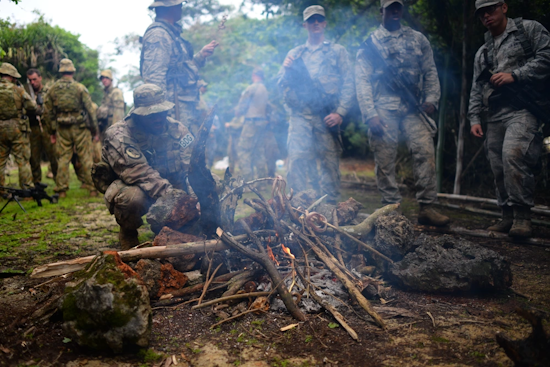
The SERE training program has evolved and gone through many changes throughout its existence.
For starters, the SERE curriculum was initially focused on providing outdoor survival training.
However, with time, the program has also expanded to focus on evasion, resistance, and escape.
In general, the SERE curriculum differs from other types of civilian survival training in many areas.
First, SERE training always begins with the troops encountering some type of exit scenario or exit strategy (underwater escape, parachuting, etc.).
Secondly, there is a greater focus on specialized military survival equipment along with signaling and rescue techniques.
Third, military survival skills must also teach individuals to avoid a wide range of risks, environments, and injuries.
Military survival skills often involve exposure to enemy forces.
As such, the basic survival skills introduced at SERE training include common outdoor and wilderness skills.
Furthermore, troops must master how to get clean water and food, navigate exotic terrain, and improvise equipment.
Trainees are also taught self-defense skills along with the situational awareness and attitude necessary to make it on their own.
Finally, SERE training may introduce troops to parachute landings, vectoring a helicopter, and using various rescue devices.
Related Article – Green Berets Vs. Delta Force
Survival, Evasion, Resistance, & Escape
There are many different elements to Survival, Evasion, Resistance, and Escape training.
First, the goal of the training course is to provide students with the “assurance of success and survival.”
Thus, trainees undergo grueling combat survival as part of the training program.
Secondly, military survival is another skill that is highly valued in SERE training.
Military personnel are often subject to enhanced risks and dangers.
Consequently, many individuals receive training that is specific to the job rating or assignment.
Third, SERE training is huge on teaching evasion, resistance, and escape techniques.
While many of these techniques taught at the training program are classified, it’s known that resistance training is an emphasis.
The purpose of this type of training is to introduce troops to what it might be like to be captured by the enemy.
Therefore, service members go through simulated exercises designed to produce hardship, stress, abuse, and torture.
Despite the program having the potential to be traumatic for trainees, it’s better than the alternative.
As one training instructor put it, “SERE school is great… it serves as a reminder that [under] no uncertain terms [you] want to become a POW.”
SERE Training Schedule
In general, the length of time spent at SERE training and difficulty (A, B, C) depends on the military occupation and risk of exposure.
Nevertheless, most SERE training courses are divided into 2 different phases.
The first phase usually incorporates classroom instruction with field exercises and practice.
Students are usually introduced to the Code of Conduct and other fundamentals of the program.
Then, recruits progress to the second phase of the training program where they are “released” into the field.
The second portion of SERE training is the actual “survival” portion, where troops must evade and resist an enemy force tracking them down.
Lastly, some SERE programs also walk students through a capture phase.
The purpose of this final phase is to discover what it would be like to be a prisoner of war (POW).
Trainees are sent to a mock prison where they must exist with limited food or sleep.
Students spend much of their time attempting to resist extreme isolation, exploitation, and interrogation tactics.
There are many portions of SERE training that remain highly classified, especially among special operations and the intelligence community.
The final outcome of the training exercise varies depending on the success of the simulation.
#4. SERE “Code of Conduct” Training Levels
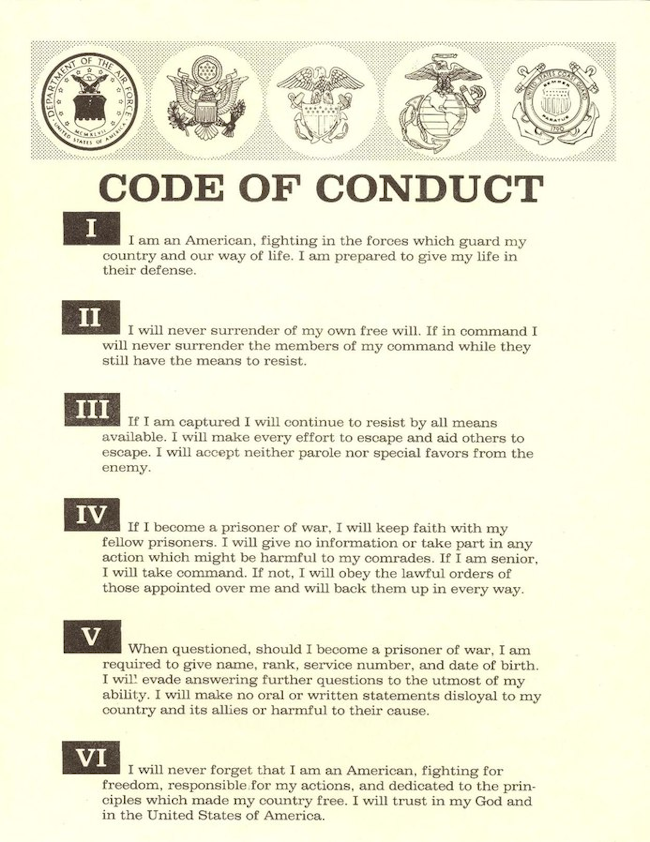
SERE training consists of 3 different levels of intensity, regardless of the service branch.
The 3 levels of resistance training include:
- A Level: Entry-level training for required personnel is usually conducted at basic training.
- B Level: SERE training focuses on survival and evasion with resistance viewed in terms of the initial capture.
- C Level: For troops at a high risk of capture and whose position or military rank makes them vulnerable.
The wars in Afghanistan and Iraq changed the need for having those with a moderate risk of capture and interrogation well-trained.
Thus, Level B is more selective than Level A and designed for personnel like infantry, security forces, and combat engineers.
Meanwhile, Level C training is usually reserved for special operations and intelligence officers, as well as commissioned and enlisted aircrew members.
It’s by far the hardest and most challenging SERE training course in existence.
The training focuses on survival and resistance along with exploitation and interrogation while being isolated in captivity.
Generally, Tier 1 special-ops groups like Navy SEALs and Delta Force receive Level C and additional training.
Escape training introduces students to what it’s like to escape from hostiles in prison camps and other settings.
C-level training is conducted over 19 days and also incorporates personnel from other fields that are at a high risk of abduction.
SERE “Code of Conduct” for Prisoners of War (POWs)
The aftermath of World War II prompted the United States to establish a Code of Conduct.
The purpose of the Code of Conduct was to continue to support troops even after they’ve been captured by an enemy force.
Accordingly, the Code of Conduct makes clear that service does not end the moment a service member falls into the wrong hands.
Rather, training programs like SERE provide troops with the knowledge and skills it takes to survive, evade, or resist capture.
Furthermore, it provides the tools to resist interrogation and torture while discovering resourceful ways to escape prison camps.
President Eisenhower once said:
“Every member of the Armed Forces are expected to measure up to the standards embodied in the Code of Conduct while in combat or captivity.”
For this reason, the Code of Conduct provides military personnel with principles to follow when they are prisoners of war.
Thus, U.S. troops take the following pledge seriously:
- “I am an American, fighting in the forces which guard my country and our way of life. I am prepared to give my life in their defense.”
- “I will never surrender of my own free will.”
- “If I am captured, I will continue to resist by all means available. I will make every effort to escape and to aid others to escape.”
- “If I become a POW, I will keep faith with my fellow prisoners. I will give no information nor take part in any action which might be harmful to my comrades.”
- “When questioned… I will evade answering further questions to the utmost of my ability, I will make no statements disloyal to my country.”
- “I will never forget that I am an American, fighting for freedom, responsible for my actions, and dedicated to the principles which made my country free.”
Military personnel become familiar with this oath while undergoing SERE training.
It helps them focus on the task at hand and offers advice and hope in the event of capture.
Related Article – 300+ Military Separation Codes And Their Meanings
#5. SERE Training Survival Situations
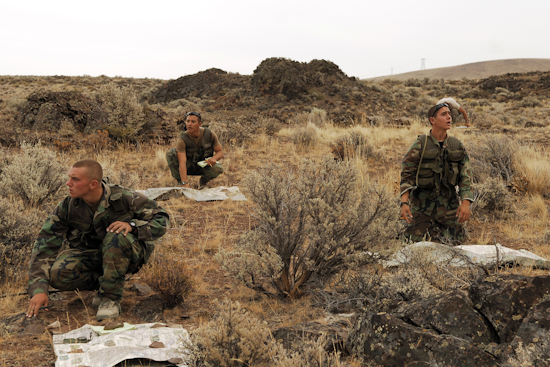
There are many different survival scenarios that military personnel go through in SERE training.
The training course depends on the service branch and other factors like military occupation and risk of exposure.
In general, SERE training places individuals in many different settings and weather conditions.
These include the following types of survival situations:
- Water Survival
- Arctic Survival
- Desert Survival
- Jungle / Tropical Survival
- Isolation Survival
Water survival courses take place in oceans, rivers, and lakes.
Meanwhile, cold and winter survival is known to challenge individuals both in the Arctic Sea while dealing with extreme ice and frozen tundra.
Then, military personnel switch extremes and must learn to survive in extreme hot common in deserts and tropical climates.
Desert survival is likely to remain a training focus moving forward for SERE courses.
On the other hand, isolation survival introduces students to more than simply being alone.
Isolation survival also involves resistance techniques like understanding the psychological impact of stress and hardship.
These negative emotions can creep up when one feels lost, alone, or trapped, as is the case in captivity.
Regardless of the training scenario, these survival settings at SERE school push trainees to the brink of physical and mental exhaustion.
#6. U.S. Military SERE Survival Schools
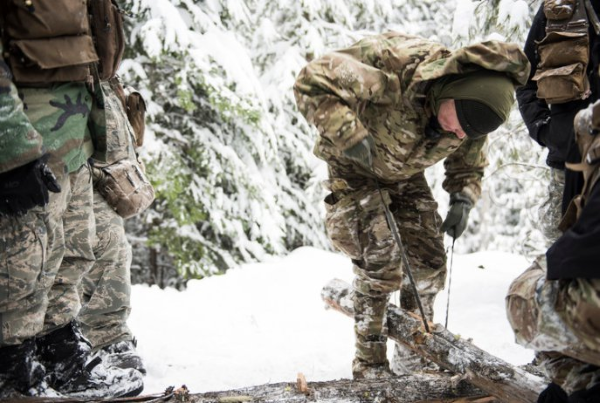
Today, SERE training is available in both the military as well as the private sector.
Notwithstanding, the original SERE training programs began with the U.S. Armed Forces.
The U.S. Air Force, as previously mentioned, was the first military branch to establish this type of training.
Be that as it may, SERE training in the modern era is viewed as a “joint activity.”
In other words, different branches of the Armed Forces work together to cross-train and develop recruits for SERE training.
Nevertheless, each service branch has its own history and development of its SERE program:
Air Force (USAF)
The United States Air Force was the first military branch to establish SERE training.
Today, the Air Education and Training Command (AETC) is responsible for assisting the military branch with program development.
It’s the largest U.S. military SERE training provider, with more than 17,000 students completing the program each year.
The U.S. Air Force offers a diverse range of survival and resistance training.
In fact, the USAF was the first branch to create a Combat “Desert” Survival Course and “Cool School” (cold weather survival).
The C-Level course is the USAF SV-80-A SERE Course. The B-Level Course is the Evasion and Conduct After Capture (ECAC) Course.
Every year, Air Force Academy students attend Combat Survival Training (CST) as part of their curriculum.
Moreover, Air Force personnel may attend other specialized SERE schools, including:
- Arctic Survival School
- Non-Ejection Water Survival
- The Personnel Recovery Academy (JPRA)
- SERE Specialist Selection Course, for Airmen interested in becoming SERE instructors.
Related Article – Air Force Officer Training School (OTS) Guide
U.S. Army SERE Training
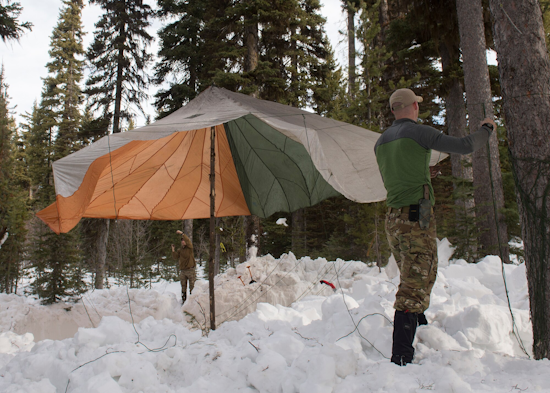
The U.S. Army is one of the last service branches to officially declare a SERE training program.
Nonetheless, survival training has a long history in the service branch and represents one of its chief training objectives.
As a result, the U.S. Army (like other service branches) operates under DoD Directive 1300.7.
The directive requires and specifies the Code of Conduct training required for military personnel.
Today, the Army features many different types of SERE training:
- Army Airborne School
- Army Aviation School
- Desert Warrior Course
- Northern Warfare Training Center (NWTC)
- John F. Kennedy Special Warfare Center and School (SWCS)
The goal of Army SERE training is to ensure each student gains the tactics, techniques, and procedures (TTPs) necessary to “return with honor.”
U.S. Navy SERE Training
The Navy began following the lead of the Air Force around the beginning of the Cold War.
As a result, the service branch established its own version of SERE training.
Today, the Center for Security Forces (CENSECFOR) organizes and conducts Navy SERE training.
The purpose of the program is to educate and train sailors with the tools and opportunities to survive and resist enemy capture.
In the past, the Navy has considered teaching swimming and diving skills as part of its survival training.
The U.S. Navy, like other service branches, features many different locations and schools for SERE training, including:
- Naval Special Warfare SERE Training
- Naval Aviation Survival Training Centers
- The Survival, Evasion, Resistance, and Escape (SERE) School
- Cold Weather Environmental Survival Training (CWEST)
- Recruit Training Command Water Survival Division
- Naval Special Warfare Advanced Training Command (NSWATC)
Previously, SERE training in the Navy has been closely aligned with the programs featured in the Marine Corps.
Related Article – Navy A School: A List Of All 23 Locations + Training Summary
Marine Corps (USMC)
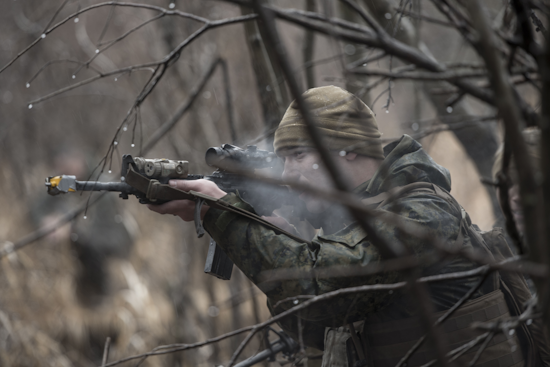
The Marine Corps joined the Air Force and Navy in establishing SERE programs in the 1950s.
Thus, the goal of the training program is to preserve the lives and well-being of Marines who are in danger or already captured or detained.
Currently, the Marine Corps works closely with the Navy in training service members.
Nonetheless, the Marine Corps does operate its own Level C course at Camp Lejeune.
Marine special operations frequently train with Navy special ops, which allows for a seamless transition during joint exercises.
Still, the Marine Corps has its own specifications for determining training levels (A, B, C).
Marines receive advanced SERE training at the Mountain Warfare Training Center (MWTC) and Jungle Warfare Training Center (JWTC).
Furthermore, Marines may also attend the Special Operations Training Course (SOTC) at Camp Lejeune.
Related Article – 10 Best Military Training For Civilians
Conclusion
Survival, evasion, resistance, and escape (SERE) training teaches many of the fundamentals of self-reliance and survival.
The program is designed to provide military and civilian personnel with the skills necessary to survive in a foreign setting.
As such, the program puts trainees in many different simulated environments where the goal is to evade capture or escape detention.
- Replacing Dog Tags: 6 Things You Need to Know - June 28, 2024
- Navy OAR Test Study Guide - June 24, 2024
- 10 Best Sniper Movies of all Time - June 20, 2024
Originally posted on August 14, 2023 @ 7:47 pm
Affiliate Disclosure: This post may contain affiliate links. If you click and purchase, I may receive a small commission at no extra cost to you. I only recommend products I have personally vetted. Learn more.
